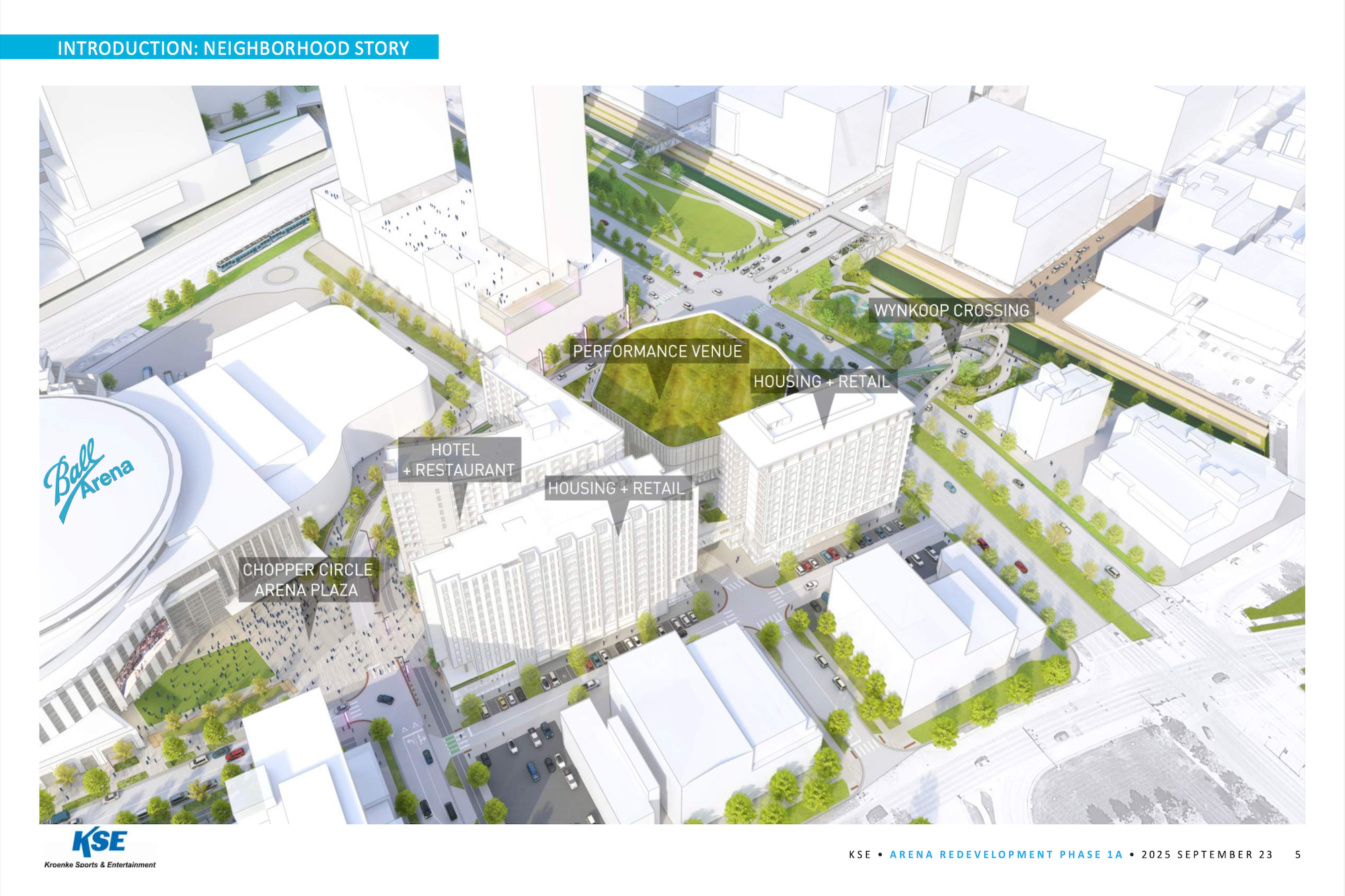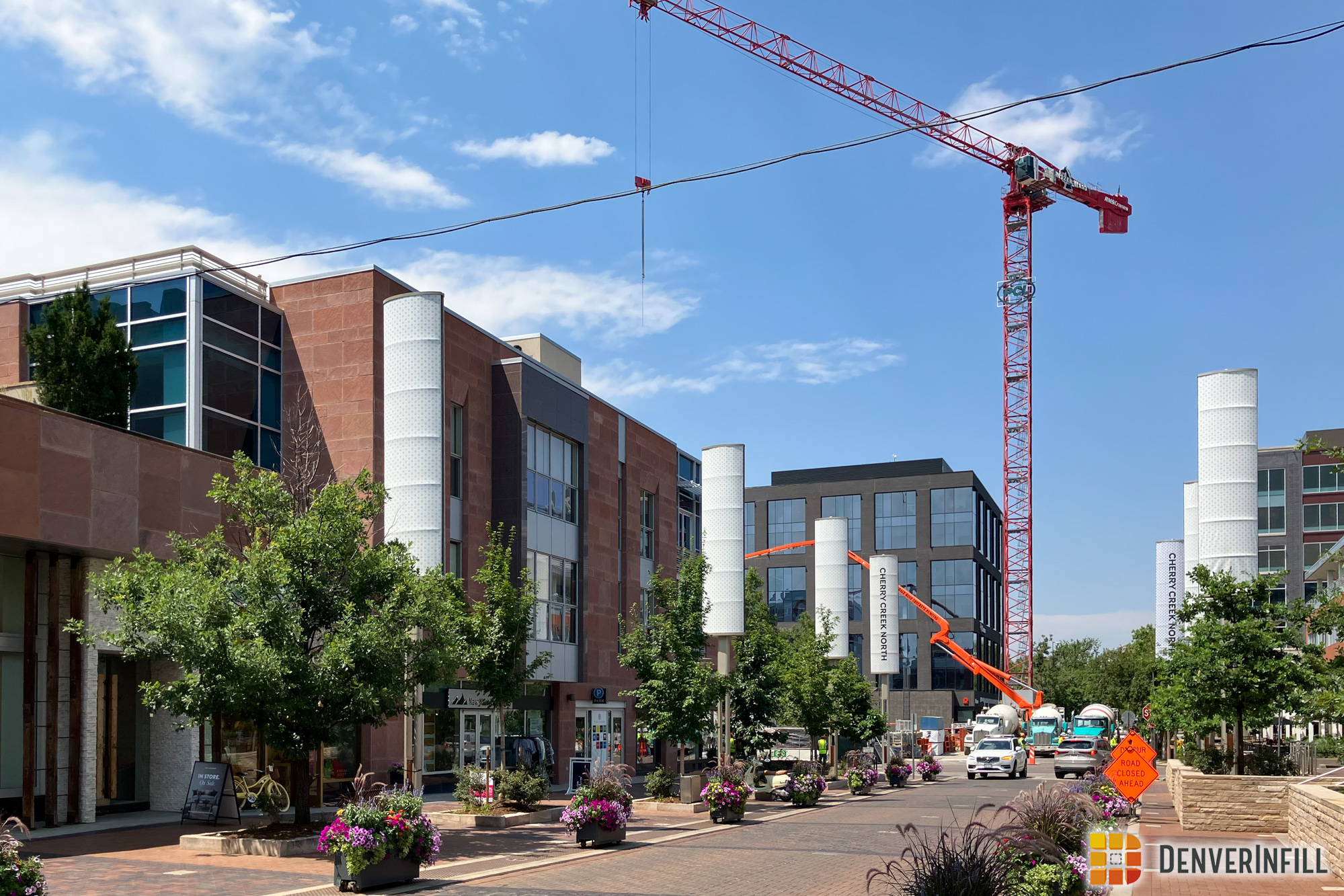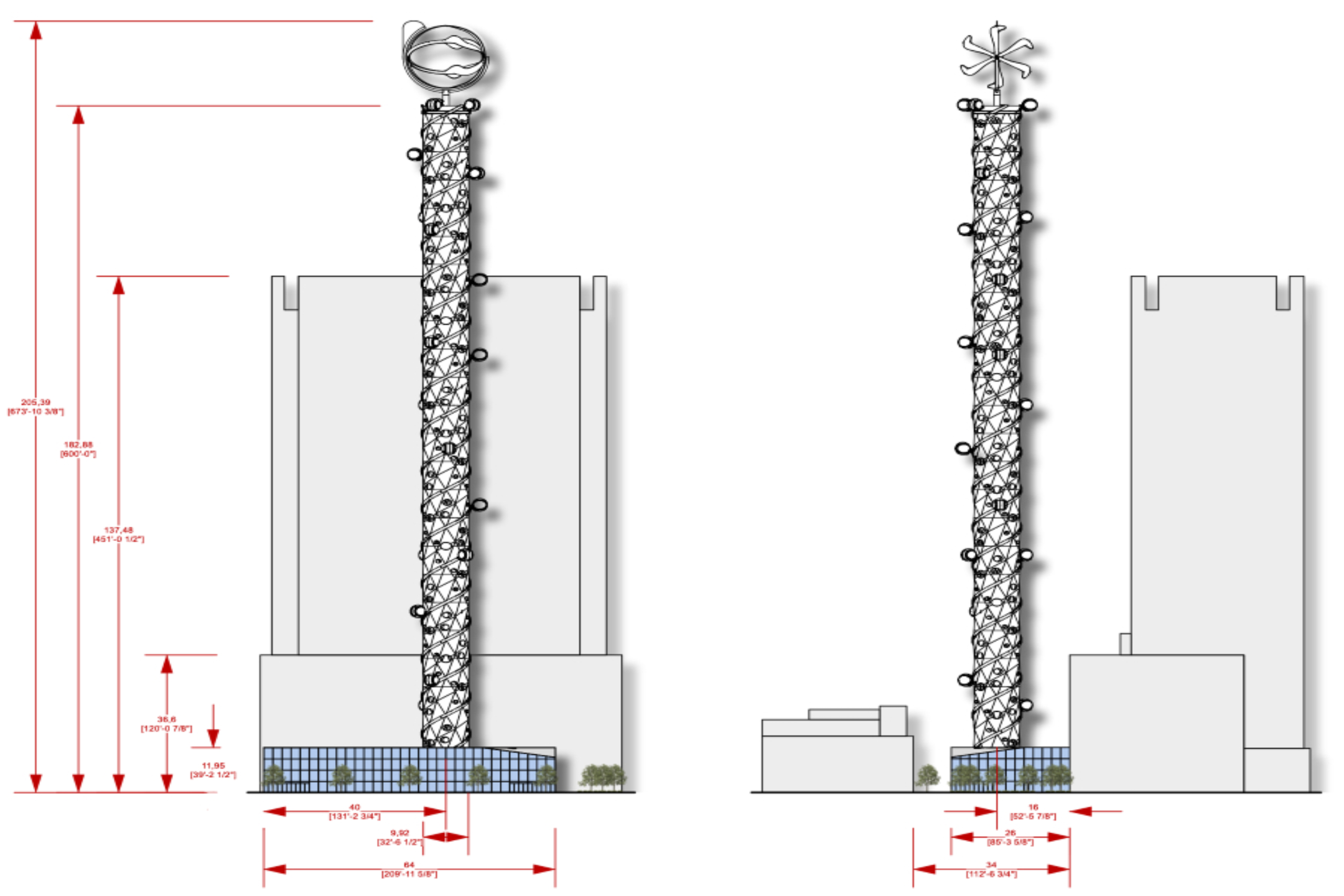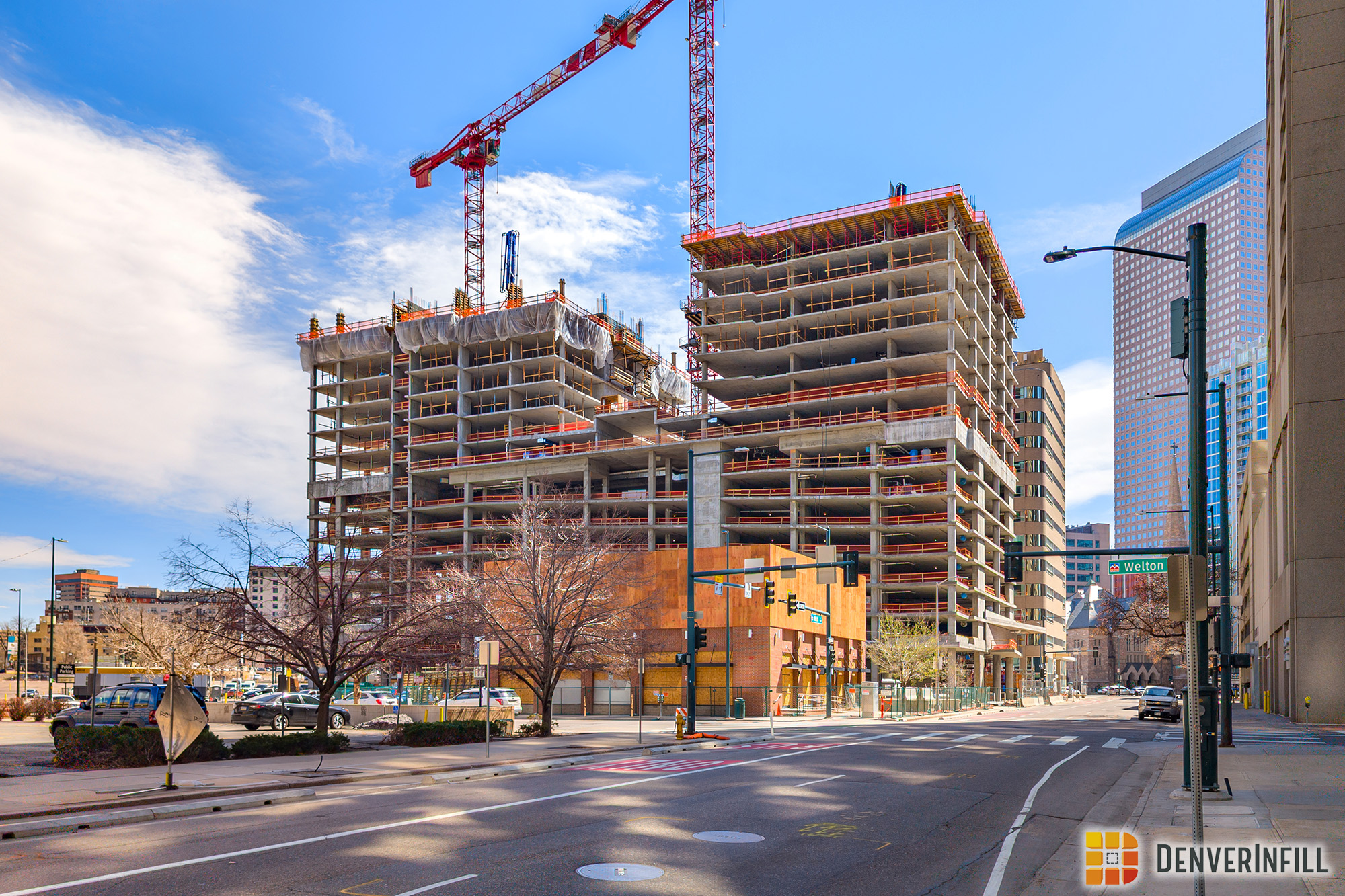It’s been four months since our last update in September 2013, so let’s take a look at the state of Downtown Denver’s residential construction boom.
First, a quick note about our tracking criteria: Projects included in the map and tables below are those that are (a.) new construction multifamily residential—rental or for-sale, (b.) ten units or more, (c.) completed, under construction, or proposed since January 2012, and (d.) located within a 1.5-mile radius of a geographic central point (17th and Arapahoe) in Downtown Denver. Projects outside of the green circle but within the extent of the Google Earth aerial image are not shown. A project was included in the Proposed category if (a.) a development application has been filed with the city, (b.) the specific project location is known, and (c.) the number of units is known.
Now, on with the update!
Here’s our new Downtown Denver Residential Projects map for January 2014. Click on the image to view at maximum size (2400 px) in a new browser window, or right-click here (Save Link As) to download a high-resolution PDF version (about 9 mb).
The accompanying table (PDF version here):
Since September 2013, ten projects (blue highlight) with a total of 1,580 units have finished construction, bringing the number of completed units within a 1.5-mile radius of 17th and Arapahoe since January 2012 to 2,982. Several of these projects, like Cadence, One City Block, 2828 Zuni, The Douglas, and Element 47 are so newly finished that the paint’s barely dry and, in some cases, minor construction is still going on as new tenants are moving in.
Four projects (green highlight) totaling 927 units have started construction since our September update, resulting in a total of 4,406 units currently under construction. AMLI Riverfront Park is almost finished and will be moving to the Completed column within a month or so.
Ten projects (purple highlight) with a total of 1,843 units are new to the Proposed category since September 2013, for a total of 2,952 units currently proposed. Some of these Proposed projects have not been covered—yet— on the DenverInfill Blog due to (a.) a lack of reliable information, (b.) their being in the early stages of development, or (c.) we just haven’t gotten around to it yet! Also, there are about a dozen more projects within the 1.5-mile radius that have recently been submitted to the city for review, but are not in the Proposed category because we are still researching either the exact location or the number of units.
Assuming all of the developments under construction will be completed, then a total of 7,388 new residential units will be added to Downtown Denver from January 2012 through mid-2015, without counting any on the Proposed list. That translates into roughly 11,000 new residents and approximately $1.5 billion of residential investment in Downtown Denver.













Excellent update!
So of those 4,406 units are any of them for sale units, or are they all for rent?
A majority if not all of new multi-family construction in Denver right now is being built for rentals. There are some construction defect laws in place that are keeping builders away from the condominium market. There are some new town-homes being built for sale all over Denver, but nothing “multi-family” condo.
If you would like some more specific information about any individual property, we would love to help you.
Anton Usaj
http://www.usajrealty.com
I think its somewhere in the 100…
I don’t understand Anton Usaj’s comments. If construction defects are, in fact, an issue, then this should affect both rental property development and for-sale development. After all, the owner of a rental building wants to receive, from the developer and the builder, a well-constructed building, what he/she paid for, since it is an investment, one that will be used and, someday, resold. So the same issue applies to both for-sale construction and rental construction.
Having said this, there must now be a pent-up demand for for-sale property. I certainly want to buy. I’m not alone.
I think the issue is around HOA’s and their ability to leverage a large owner base to litigate against a developer. Renters don’t have this ability/desires nor does a owner of a home/apartment building, as they would have to take on all the litigation on their own. Thats a weighty challenge.
renters very rarely, or ever, organize as a group to help the owner of a building sue the developer…it’s the extra-quick action by HOA (without allowing a reasonable period to remedy an issue by the dev) that causes these rates to jump and scare away new, condo, affordable housing (yes, condos are pricey at times, but they are also the most common first home and are typically more affordable)
to not support this bill is really to not support affordable housing – come on dems…
plus the contracts are different for for-sale vs. rental multi-family between developer and owner.
Bryan says “(without allowing a reasonable period to remedy an issue by the dev)” which is what any good marketing / legal team of a developer would say. This would make it sound like HOA’s are wanting to jump in to the 2-3 year legal battle w developers. As I see (and have seen) it the developers will take little to no action to remedy problems until they are sued, then pass the buck on to any and all contractors, engineers or architects that may have been involved in the project…..there is a large one of these ongoing in the RFP neighborhood.
It worries me that there are so many large apartment buildings going up in downtown Denver’s last remaining prime-quality *INDUSTRIAL* land. I’m speaking of the areas sandwiched between the UP and BNSF tracks, and between the BNSF tracks and the expressways. I particularly refer to the “Denargo” and “3500 Rockmont” locations.
These are, objectively, crappy places to have a house or apartment, and they’re a bit of a hike to decent public transportation (as well as an unpleasant hike). But they’re damn good industrial locations, with direct connections to multiple railroads and expressways.
Why waste them on housing? Is the market for light industry so dried-up that nobody wants to build it?
Nathanael,
Your comment has some relevance to the Rockmont location but not so much for the Denargo location. The city is growing and has identified the Brighton Boulevard corridor as a future, major commercial/mixed use corridor. I am sure that there are plenty of option for light industry further away from downtown along the rail lines. In addition, those two locations have something else in common: they are right next to the South Platte river, the best asset in the city! My question, then, is why waste river-fronting property on industrial uses? Those should be reserved for mixed-use, primarily residential, some office, developments. It is about time Denver corrects the mistakes from 40-50 years ago.
Also, why does Anton Usaj get to advertise his realty business here (via link)?
Thanks Ken, I really like these updates. Some for-sale would be nice of course, but residents are residents and I’m excited to see Denver’s growth.
So this will add about 11,000 new people to downtown Denver, but what kind of growth is that, percentage-wise? Denver has a population of over 600,000, but that’s for the entire city. Does anyone know the population of downtown Denver so we can understand the significance of this growth?
That 11,000 number is probably on the low end since Denver usually counts an average of 1.9 residents per unit in multifamily housing. A safer number would be somewhere between 1.5 and 1.9. I looked at some census tracts recently and the tracts that incorporate those areas has a total population of ~55,000. That translates into roughly a 20% increase. What is probably more important is that the distribution is not equal. For example, the population for the census tract of Jefferson Park is 2,332 and the added units is 668*1.5 = 1,002: a 43% increase. Or for Golden Triangle: current pop is 1,622 and, if all units get built, then there would be 766*1.5 = 1,149 more people. A 70% increase. Those two neighborhoods have among the lowest densities so those increases would make a huge difference.
Very helpful, thanks
This will no doubt give a big percentage increase in residents downtown. One can obviously make the percentage increase seems huge by focusing on smaller areas, i.e. a lot that had one or two people living on it in a one story building that is getting a 100 unit seven story building can be said to have multiple thousand percentage increase.
What’s more interesting to me is the question of what percentage of growth in the Denver Metro area is happening downtown. I suspect that despite an increase in the number of units downtown, multiples of that number of units are now being constructed again in the exurbs.
James, Bryan, Anton, Of course renters are not going to organize to take care of construct defects. Why would they? The point is the owner of the building (the rentee not the renter) will not accept delivery of a building with defects. That is why I don’t think Anton’s point really applies.
But, Jeffrey, they will and do. Quite willingly. The whole point of a multifamily rental property is to finish construction and lease it up as quickly as possible… because that’s where the income is generated. You have to understand, too, that many of these “owners” of multifamily developments are REITs or some other type of real estate investment company buying low, selling high. Honestly, if there is poor construction… a new owner will come in after purchasing and put a bandaid on it to make it look attractive to renters for a few years, make some money and then sell it when it’s attractive to other investors.
It’s a whole other animal than dealing with condos for purchase in a multifamily development. Rental developments are much more fluid than for purchase. Renters come and go… properties place bandaids to quick-fix problems and so on. You can’t do this in a condo building. Simply won’t fly.